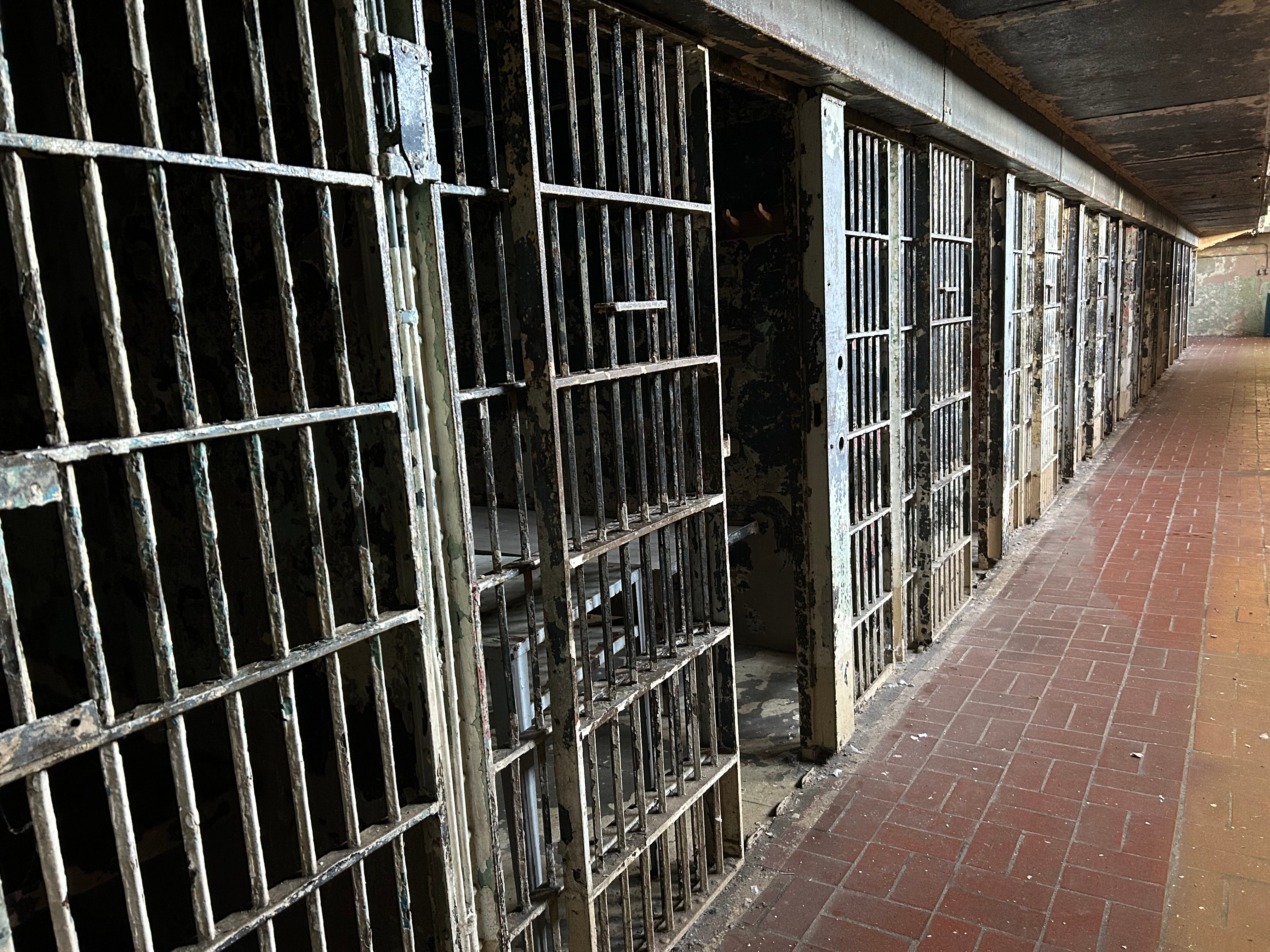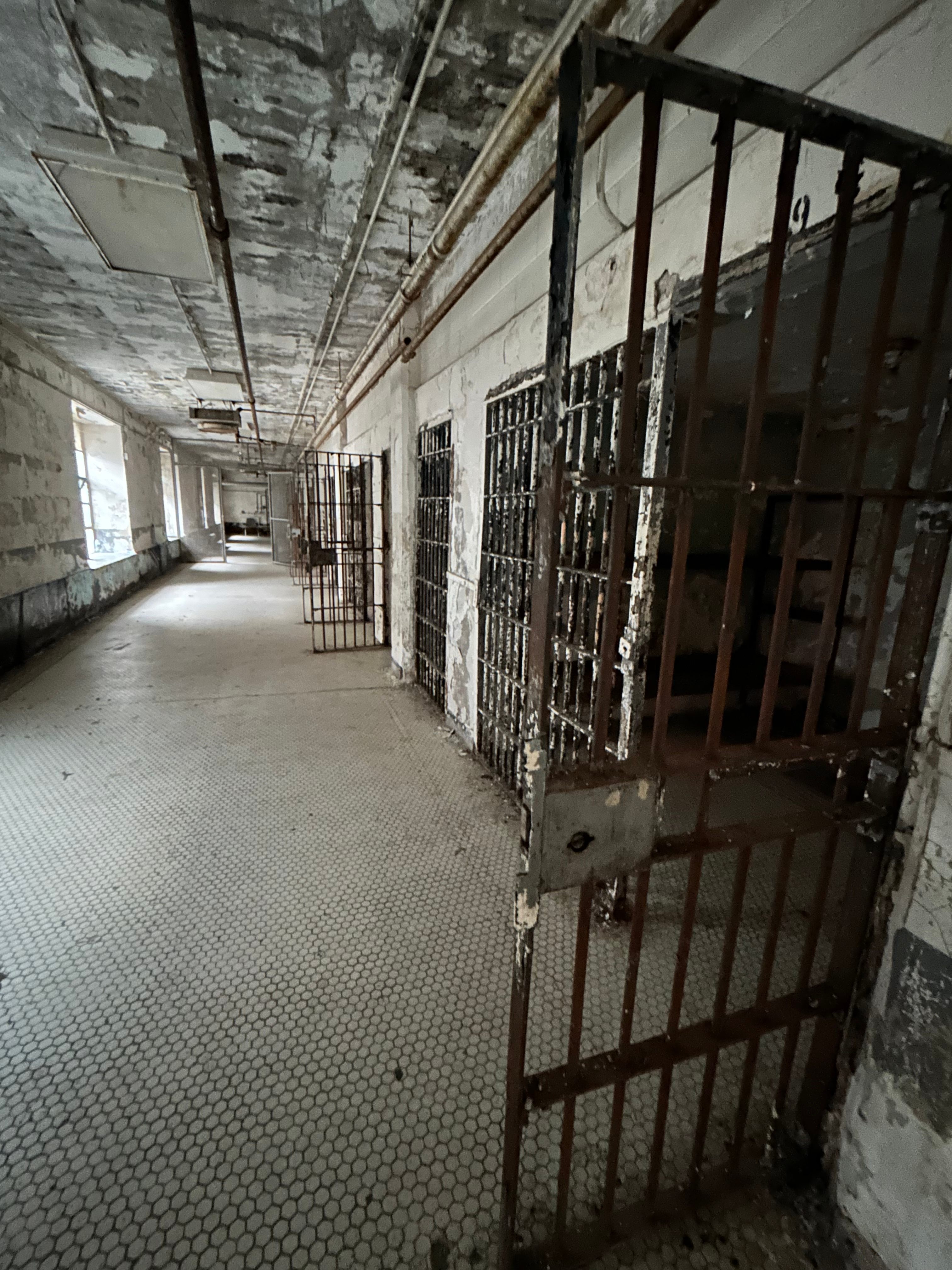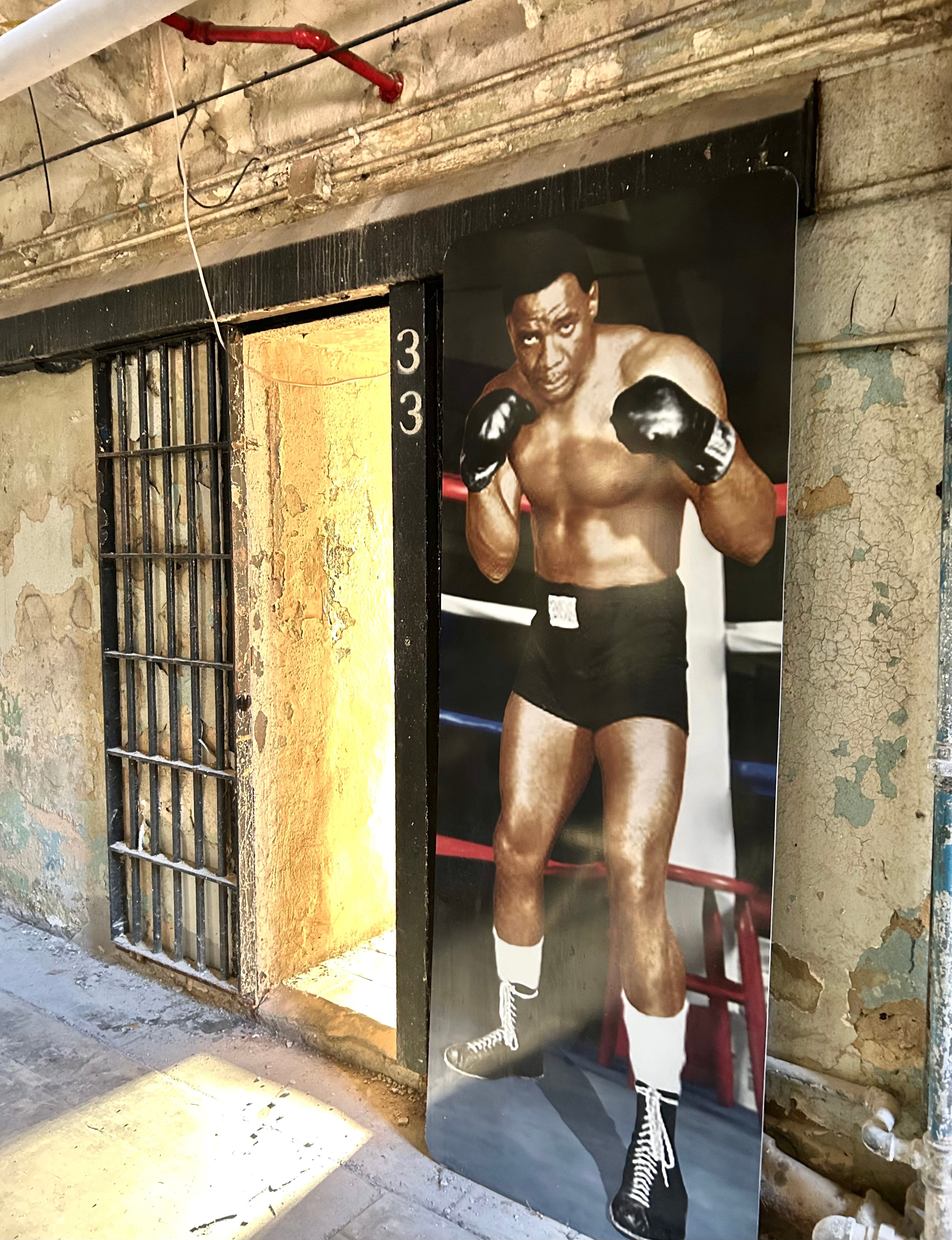Nearly a hundred years before Alcatraz, there was the Missouri State Penitentiary.
On an unseasonably warm afternoon in Jefferson City, Missouri, the January sun shines high over the prison turned historic site. Inside, the limestone walls cast chills. Longtime resident and penitentiary tour guide Jenny Switzer leads the way down a dank, narrow corridor. “This is H Hall,” she says, pausing, with an air of reverence. To the left, long rows of cells, stacked four stories high, line the unit. The iron-bar doors peel with layers of chipped paint. “Everyone has their favorite housing unit,” Switzer says. “This is mine.”

Opened in 1836, Missouri State Penitentiary was the oldest operating prison west of the Mississippi River until it closed in 2004. Though hard to imagine today, with its crumbling grounds and empty guard towers, the penitentiary was once considered a well-oiled, self-contained town.
But countless injuries and deaths, plus a major inmate riot in 1954, led Time Magazine to call the prison “the bloodiest 47 acres in America.” Today, guides and guests alike attest to the apparitions, unusual sounds, and eerie vibes filling the storied halls.
THE GASTRO OBSCURA BOOK
Taste the World!
An eye-opening journey through the history, culture, and places of the culinary world. Order Now

Switzer, who grew up in Jefferson City, feels a deep personal connection to the prison. “This place was here all my life,” she says. “But the moment I stepped in here, I was obsessed.”
For eight years, Switzer has guided thousands of visitors on historic—and paranormal—tours, some overnight. From pokes in the back when no one was nearby to the unmistakable chink of invisible coins falling against a cement floor, she has experienced dozens of paranormal encounters and witnessed several ghostly apparitions.

With every group, she shares the prison’s stories—women inmates who went on to fight for prisoners’ rights, executions by cyanide, inmate ingenuity and escape attempts, mistreatments and floggings, and even the story of one boxing heavyweight champion of the world—it all happened here.
Back in H Hall, Switzer starts on the story of infamous prisoner Kate Richards O’Hare. “Kate was a pretty prominent woman before she came in, and even more so after she left,” Switzer says.
A brazen socialist, O’Hare was thrown in a cell in H Hall, now Housing Unit 1, for violating the Espionage Act of 1917.
“She was—can I say it?—she was a badass,” Switzer says, adding that she has a first-edition copy of “In Prison,” the book O’Hare wrote about her time in the penitentiary. “It’s my most prized possession.”
Then, mid-sentence, she stops.
“Oh, oh, oh! Did you just hear that?” Switzer says. Her eyes widen.
Clank. Clank, clank.
“It’s coming from up there,” she says, pointing to the third floor. “You want me to come up there?” she hollers toward the ceiling.
At the top of the iron staircase, she finds an old window latch and a swift breeze: the culprit—this time.

Before the infamous inmates and ghostly apparitions, there was one man and an idea.
In 1831, Jefferson City was a fragile capital city competing with nearby metropolises, like Sedalia and St. Louis, for the seat of Missouri government. Governor John Miller was convinced that opening and operating a state penitentiary would secure the city’s position.
Two years later, the Missouri House of Representatives passed a bill to establish the facility, and construction began. In 1836, the prison’s first inmate, Wilson Eidson, arrived, sentenced for stealing a watch.
By 1932, with roughly 5,300 inmates, the Missouri State Penitentiary held the largest inmate population in the U.S. and was considered one of the most successful prisons in the country.
On average, inmates cost the state just 11 cents per day. “They were very proud of that,” Switzer says. “That was a gold star.”
On good days, inmates sought a sense of normalcy. They formed baseball teams, played miniature golf, attended chapel, and worked long days in one of dozens of factories—a major regional economic boon. Overall, though, conditions were grim.
Inmates were subject to intense abuse and neglect. “[The guard] could whip a man for literally anything or nothing at all—look at him wrong in line; he’s having a bad day—he’s gonna take it out on you,” says Switzer.

In 1954, two inmates feigned sickness to attract attention. When two guards entered the hall, the inmates overpowered them and stole their keys. The two ran along the cellblock releasing other inmates as they pursued a jailhouse informant in Housing Unit 3.
“As waves of rioters stormed the deputy warden’s office, armed troopers on the roof were finally forced to open fire with machine guns and riot guns to force the desperate prisoners to flee the prison yard,” Missouri Highway Patrolman Walter Wilson later wrote. “Several convicts were injured by gun fire.” Following the riot, a middle section of bars was added to Unit 3, along with extra caging.

Other infamous inmates served shorter stints. Alongside O’Hare in Housing Unit 1, activist Emma Goldman served two years for opposing the draft during World War I. A pioneering champion of women’s equality, workers’ rights, and free universal education, Goldman was considered one of the most dangerous anarchists in the country at that time.
Years before he would kill five people outside the Union Railway Station in the historic Kansas City Massacre, infamous bank robber, Charles Arthur “Pretty Boy” Floyd, was locked up in Jefferson City in 1925 for payroll robbery.
While it presented its share of mistreatments and hardships, the prison also afforded some opportunity. Charles Liston, an Arkansas-born repeat thief was thrown into Housing Unit 4 at age 22 for armed robbery, his first serious conviction.
During his time outside the cell, Charles Liston – or “Sonny” as the world would later come to know him – linked up with Father Alois Stevens, a priest who oversaw the prison gym. Stevens reportedly marveled at Liston’s physicality and took him under his wing, teaching him the techniques of boxing. Two years into his sentence, Liston was freed on parole and began his ascent to world heavyweight boxing champion. During his career, he faced many notable boxers of the era, including Muhammad Ali.

Just beyond Sonny’s cell, down a steep staircase, Switzer stops. “This is the dungeon,” she says. “[Guards] would whip these men within inches of their life, and most times, they spent time in here.” She steps inside a shallow hallway, just three or four feet wide, and reveals eight more cells.

To the left, she swings open a rusted gate, inside only stone walls and floor. “Story goes, they were putting a dozen, eighteen men down here, with no bedding, no bunks, no blankets, no mats, no toilets,” she says.
Inside the cell, for effect, she turns off an exposed lightbulb, the only source of light. Palm to nose, in here, the eyes can only see black. “I’m from Missouri, and this is a cave state,” Switzer says. “We call this cave dark.”
Walking out, a plaque on the wall recalls the years that J.B. “Firebug” Johnson served in the dungeon: 1883 to 1900, for setting a fire that destroyed prison property and caused the deaths of several inmates. After prison, he wrote a book, “Buried Alive; or, Eighteen Years in the Missouri Penitentiary.”
Just down the hall from Firebug’s cell, during her first night on the job, Switzer had an encounter with an entity. “I’m standing in front of the door, and I go to flick the light off, and, immediately, I felt something on my right. I felt his face right here,” she says, holding her right palm just next to her cheek. “I can feel him breathing.”
“And I’m thinking, OK, you’re imagining this, but you could not pay me any amount of money to turn my head and look toward that door where the dead-end is—he’s standing right here, every time.”
Housing Unit 3, a caged, open-air block, is home to cell 45, where James Earl Ray, who would go on to murder the Rev. Dr. Martin Luther King, Jr., served time—until he escaped.
In 1959, Ray was sentenced to 20 years after holding up a St. Louis Kroger. In 1967, he capitalized on his job in the prison bakery and snuck into a large box used to ship bread. When a truck arrived to pick up a supply, the bread box—with Ray inside—left the prison grounds. Just a year later, in April 1968, Ray gunned down Dr. King.

The fascinating stories are all that remain of the thousands of inmates who spent time locked inside these walls. In 2004, the penitentiary closed its doors officially and transferred its inmates to the Jefferson City Correctional Center, just a few miles away.
Today, tours run from March through November, and guides like Switzer continue the legacy, sharing the stories of anguish and ingenuity, of tragedy and triumph, that ooze from the cells of the Missouri State Penitentiary.